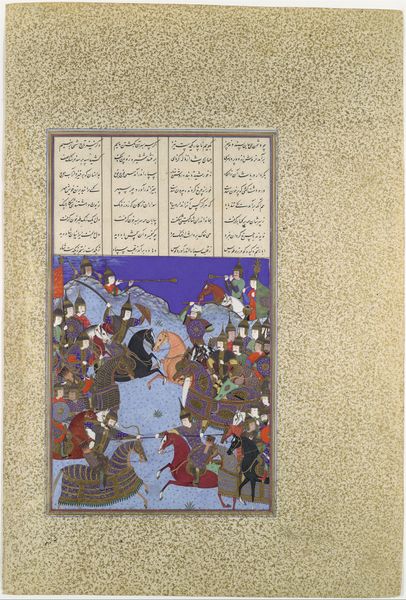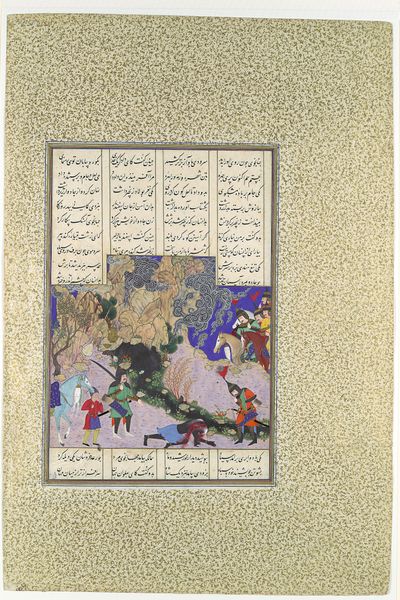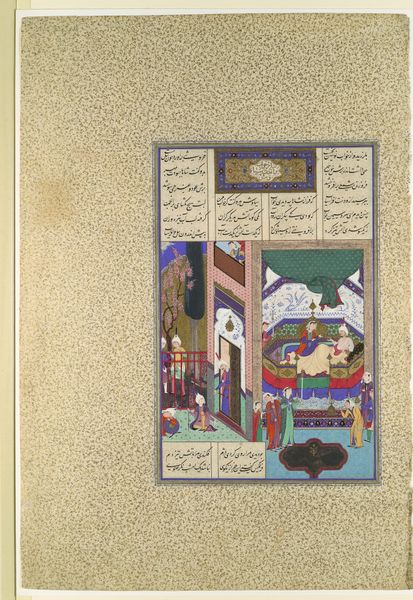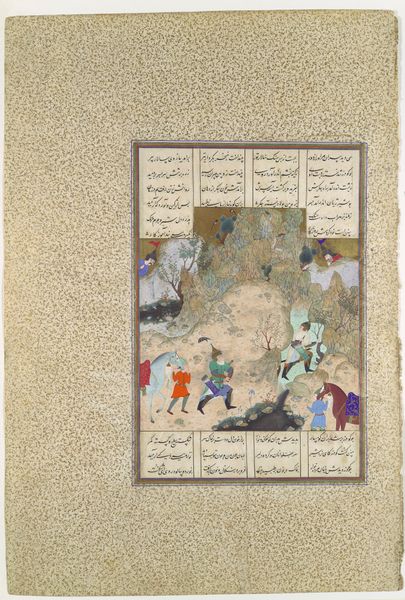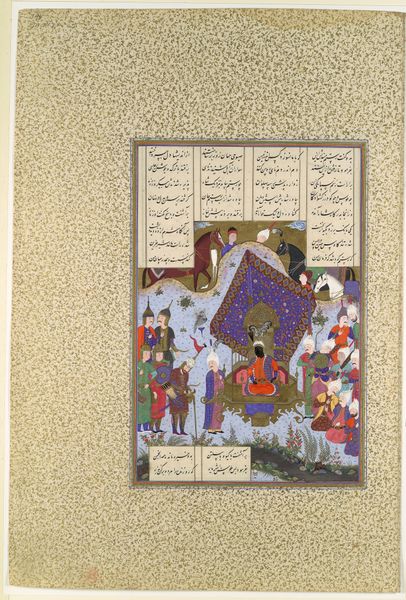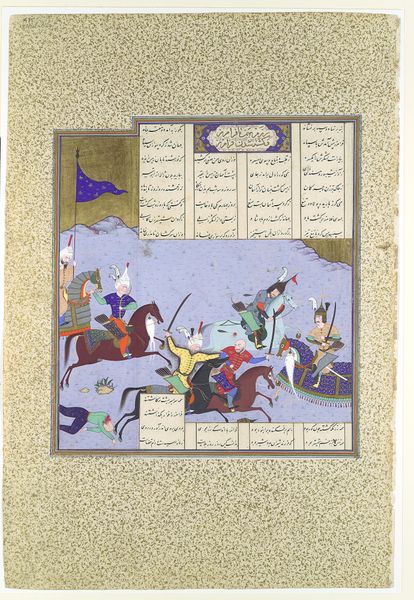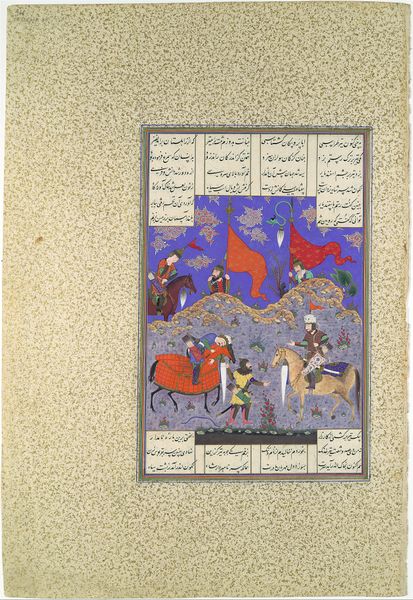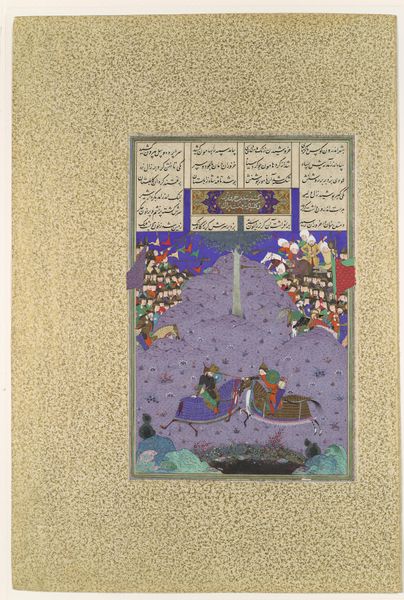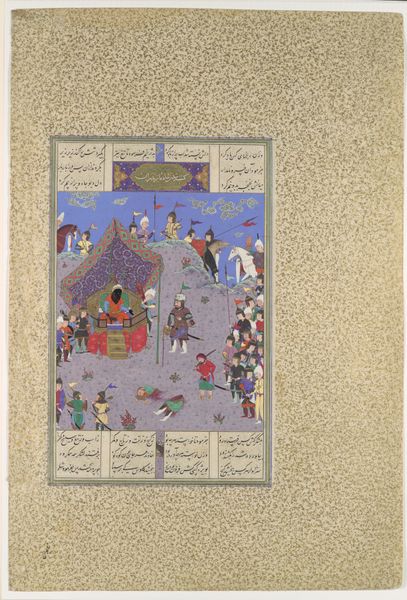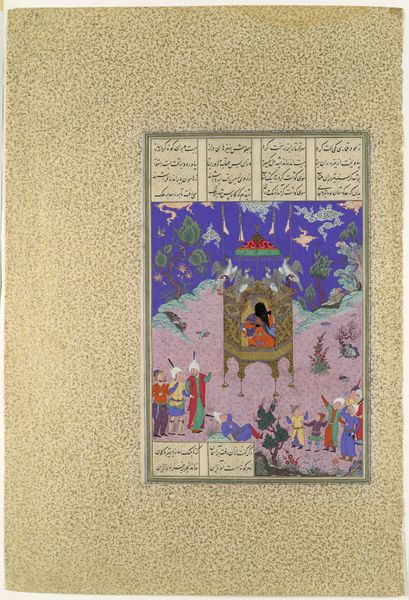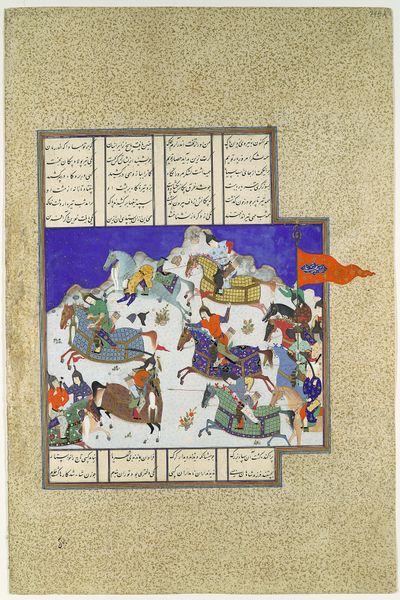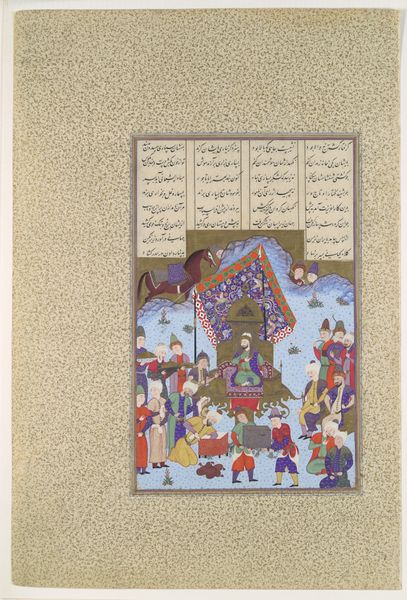
"The Fifth Joust of the Rooks: Ruhham Versus Barman", Folio 342v from the Shahnama (Book of Kings) of Shah Tahmasp 1500 - 1555
0:00
0:00
tempera, painting, ink
#
tempera
#
painting
#
ink
#
horse
#
men
#
islamic-art
#
miniature
Dimensions: Painting (recto): H. 7 11/16 in. (19.5 cm) W. 6 3/4 in. (17.2 cm) Painting (verso): H. 8 1/8 in. (20.6 cm) W. 6 11/16 in. (17 cm) Page: H. 18 11/16 in. (47.5 cm) W. 12 9/16 in. (31.9 cm) Mat: H. 22 in. (55.9 cm) W. 16 in. (40.6 cm)
Copyright: Public Domain
Here, in the Metropolitan Museum, we see "The Fifth Joust of the Rooks", a page from the Shahnama, painted with opaque watercolor, ink, and gold on paper. It depicts two warriors, Ruhham and Barman, engaged in fierce combat on horseback. The lance, a symbol of power and nobility, is central here, reminiscent of ancient Roman cavalry contests. Notice how this motif of mounted combat transcends cultures. Echoes resonate with medieval European jousts, where knights similarly clashed, embodying chivalry and martial prowess. The horse itself, a universal symbol of strength and virility, appears across epochs, from the steeds of Greek gods to Renaissance battle scenes. Yet, consider the subtle shift: in some contexts, the lance represents righteous struggle, while in others, it signifies brutal conquest. This duality is a powerful force, engaging viewers on a deep, subconscious level, as collective memory shapes our interpretation of these enduring symbols. It is a cyclical progression where symbols resurface, evolve, and take on new meanings across time.
Comments
No comments
Be the first to comment and join the conversation on the ultimate creative platform.
